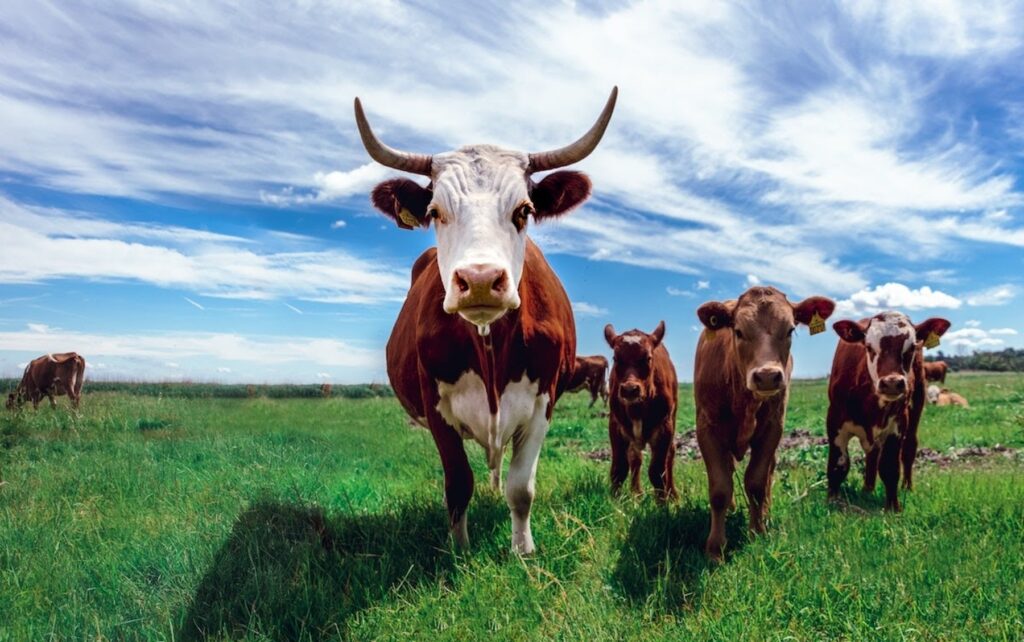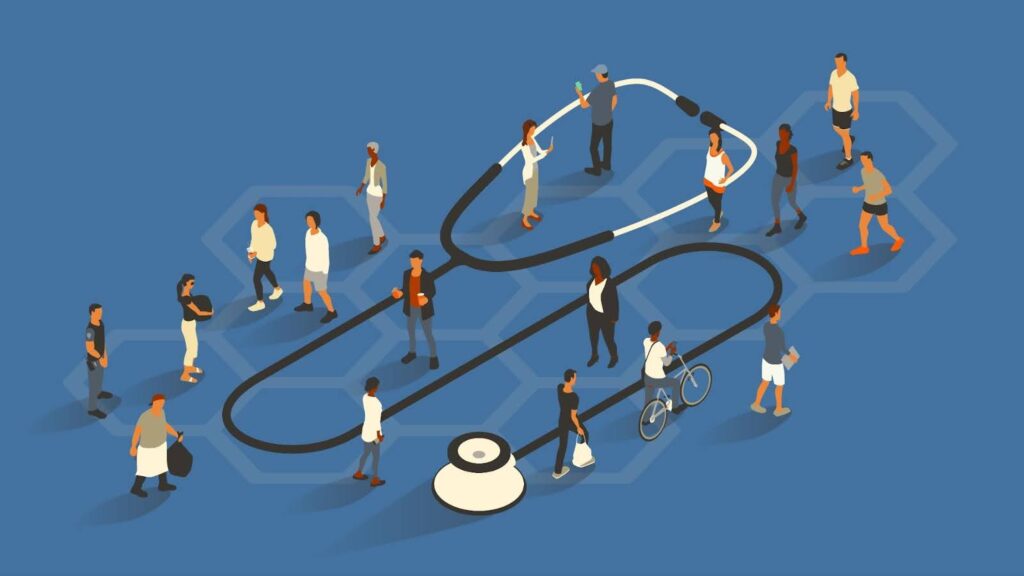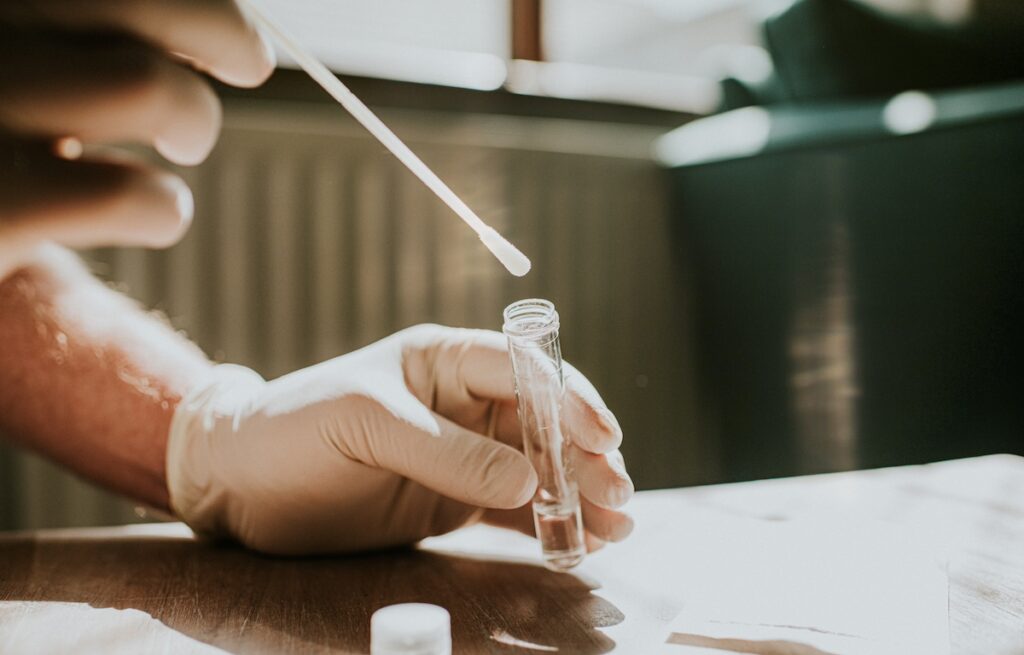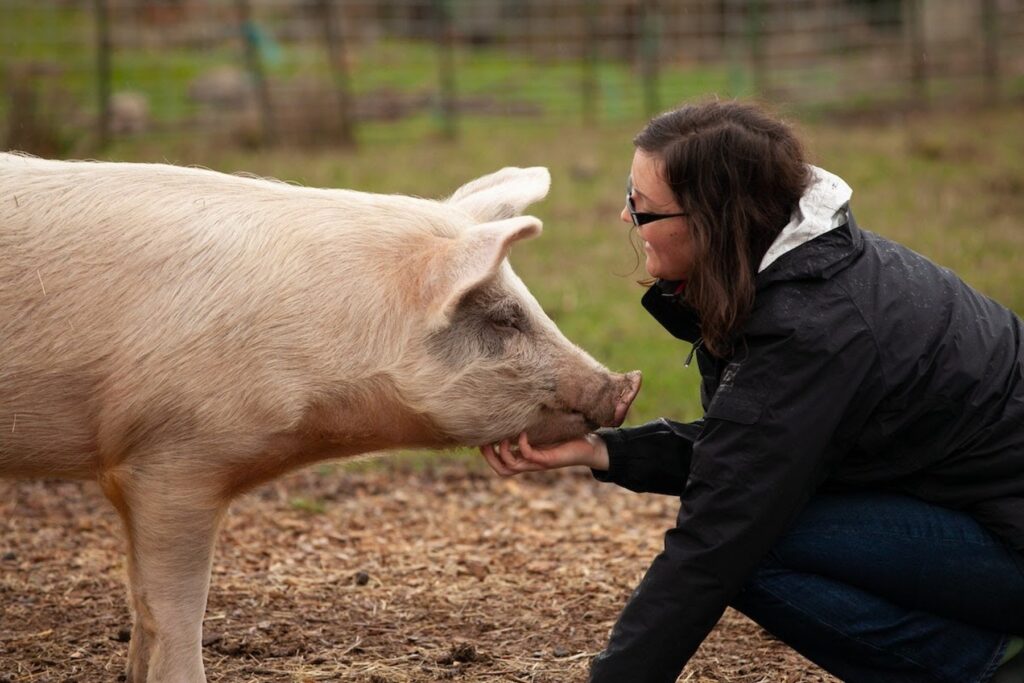Given that 61 percent of all human infectious diseases and 75 percent of new human infectious diseases come from animals, it’s no stretch to suggest that veterinarians may play a pivotal role in preventing future pandemics. Notable zoonotic infections—diseases transmissible from animals to humans —include Ebola, SARS, MERS, H1N1 (swine flu), and most recently, COVID-19. The COVID-19 pandemic was actually the third novel coronavirus outbreak of the 21st century after SARS and MERS.
Humanity will certainly encounter more of these “novel” zoonotic viruses against which we have no immunity in the future because humans not only live side-by-side with animals—companion animals and livestock—but also continue to encroach on wildlife habitats. Frequent human-animal interactions, whether planned or unplanned, make it more likely that spillover of new zoonotic pathogens will occur. Some will cause mild illnesses, but others could cause severe issues like pneumonia or be lethal in humans.
Veterinary medicine already involves a great deal more than simply taking care of animals, but veterinarians will likely play a much larger role in public health in a post COVID world for several reasons. They have experience preventing and treating diseases in populations and fighting infections capable of jumping from species to species—precisely the kinds of pathogens that might cause the next pandemic. They trace wild and domestic animal infections and may catch cross-species transmission earlier than other medical researchers and public health professionals. As the Centers for Disease Control and Prevention (CDC) asserts, veterinarians train in comparative medicine and “are competent in preventive medicine, population health, parasitology, zoonoses, and epidemiology.”
Veterinary public health, or VPH, is a public health specialization that leverages what we know about animal infections to protect people. The National Research Council has emphasized the need for more veterinarians in public health and epidemiology, but the challenge is ensuring there are enough people with advanced training in both veterinary medicine and public health to meet that need. Programs such as the University of Tennessee’s 42 credit-hour online Master of Public Health (MPH) with a Veterinary Public Health concentration are working to change that. Graduate students at the University of Tennessee learn the foundations of VPH and how to identify and respond to emerging public health problems with zoonotic origins before they can become a pandemic.
What Is Veterinary Public Health?
The World Health Organization defines veterinary public health as, “The sum of all contributions to the complete physical, mental and social well-being of humans through an understanding and application of veterinary medical science.” It is a public health specialization focused on what veterinary science can teach researchers in other areas of public health and medicine about infectious diseases and animal-borne illnesses transmitted via the food supply or human-animal contact. Broadly, VPH encompasses everything from biomedical research across species to food animal production and safety.
The primary goal of veterinary public health is to reduce human exposure to animal-borne hazards such as zoonotic diseases, vector-borne infections, pathogens in animal products, or chemicals and drugs used in livestock contaminating the food supply. The COVID-19 pandemic drove home the fact that zoonotic diseases can cause devastation in human populations—and that veterinarians have more insight into public health than most people realize.
“Veterinarians had already been through a coronavirus pandemic prior to the SARS-CoV-2 outbreak,” writes R. Scott Nolen in an article for the American Veterinary Medical Association (AVMA)’s JAVMAnews. The porcine epidemic diarrhea (PED) virus killed pigs in swine operations across Europe and Asia before the disease came to the U.S. in 2013. It spread to 29 U.S. states and infected millions of pigs before officials contained the outbreak. The lessons learned may prove crucial in the fight against novel viruses that emerge in animal populations or jump from animals to humans in the future. As we now know, zoonotic pandemic response requires a multidisciplinary approach that includes physicians, epidemiologists, public health leaders, and veterinarians.
The Role of Veterinarians in Public Health
In an opinion piece for The BMJ, representatives of the Soulsby Foundation assert that human medicine has given relatively little priority to research into infectious disease transmission and containment while veterinary medicine has prioritized infectious disease research. Consequently, veterinary medicine has a great deal of experience handling infections that spread through populations and across geographical borders. Veterinarians are also the only professionals trained in multi-species medicine, and veterinary science links agriculture, health science, and the human-animal connection.
Veterinarians contribute to human health in several ways. They help make food production safer and expand access to healthy food through the control and prevention of food-borne zoonotic diseases. According to the CDC, scientists have eliminated 14 diseases in equine, poultry, and livestock populations in the United States since 1892, ensuring a more “nutritious, affordable, and sustainable food supply” that ultimately contributes to human health. They also participate in investigations into human diseases to identify possible zoonotic origins and historic diseases such as bubonic plague that typically re-emerge in animal populations before infecting humans. Some public health veterinarians monitor the health of potential bio- or agroterrorism vectors, such as livestock and free-ranging wildlife. Others lead projects in the emerging discipline of ecosystem health, which includes research on how food animal production impacts wild animal populations.
The Potential Role of Veterinary Public Health in Pandemics
Three-quarters of emerging human infectious diseases are zoonotic, which means veterinarians and animal researchers may encounter them first. This has already happened with H5N1 avian influenza in Asia, H7N7 avian influenza in the Netherlands, Bovine spongiform encephalopathy in the United Kingdom, and Monkeypox in North America—and it will certainly happen again. Outbreaks in animals can and do serve as an early warning system for public health officials and epidemiologists. In 1999, for example, veterinary researchers identified outbreaks of West Nile Virus in crow populations months before the first human deaths.
The potential for veterinarians to play a larger role in public health is clearly there, but the United States does not yet have a collaborative animal health surveillance network. People assume that all animals fall under the jurisdiction of the USDA, but the organization only tracks health issues in economically important agricultural species like chickens, cows, and pigs. Currently, no government agency tracks companion animal health. In the future, we may come to rely on strong public-private partnerships that include veterinarians in public health careers as well as epidemiologists, other public health professionals, and physicians working together to identify emerging diseases.
There’s even already a functional model for robust collaboration and greater veterinarian participation in public health initiatives focused on zoonotic diseases. In the late 90s, New York City enlisted the help of veterinary resources to create a successful West Nile surveillance network that included zoos, state public health agencies, and veterinary diagnostic labs. That collaborative effort illustrates how a “One Health” approach to public health can streamline disease detection and response.
The Benefits of Taking a One Health Approach to Public Health
Right now, there are no comprehensive interconnected disease surveillance and response systems in the United States. One Health acknowledges that human, animal, and environmental health are inextricably linked and that medical, veterinary, and environmental experts must be a part of future public health initiatives related to emerging infectious disease outbreaks. Recent outbreaks of SARS, MERS, H1N1, and especially COVID-19 demonstrate just how important it is for humans to prepare for the inevitable spillover of infectious diseases from animals to humans.
Public health agencies have made some progress in this area. The Centers for Disease Control and Prevention, for example, established a One Health office in 2009 that now oversees surveillance and testing for SARS-CoV-2 in animals, and the USDA Animal and Plant Health Inspection Service established a One Health Coordination Center in 2012. Both organizations conduct and support research into transmission dynamics between humans and animals, create procedures and processes for transdisciplinary and multisectoral coordination in zoonotic disease response, regulate veterinary biologics, and create animal disease preparedness and response plans.
There’s still more work to be done, however, which can be seen in the fact that demand for veterinarians with additional education in food safety, food and animal production, zoonotic diseases, biosecurity, research methods, and public policy is increasing. Veterinarians with an MPH in addition to a DVM may ultimately take the lead in identifying and responding to endemic and emerging zoonotic diseases.
Is Veterinary Public Health the Right MPH Pathway for You?
There are ample opportunities for veterinarians and veterinary professionals with the right qualifications in the public health sphere. The USDA Food Safety Inspection Service is the single largest employer of veterinarians in the U.S. and possibly the world, and the agency estimates it will need 500 new veterinarians in the next few years. About half of the veterinarians in the Commissioned Corps of the U.S. Public Health Service are currently eligible for retirement. The U.S. Army Veterinary Corps adds new veterinarians each year to meet their public health mission goals, and there are numerous other opportunities in veterinary public health service at the state, municipal, and university levels. Additional opportunities will emerge as more governments and private entities embrace a One Health model.
Whether veterinary public health is the right path for you is something only you can decide. A program such as the University of Tennessee’s 100 percent online MPH in Veterinary Public Health will prepare you to make an impact in a range of public agencies and private-sector companies, including the CDC, National Institutes of Health, pharmaceutical companies, animal feed manufacturers, and meat processing plants. An MPH alone can’t give you a passion for interspecies medicine or the required prerequisite knowledge in veterinary medicine, however, the University of Tennessee, Knoxville’s public health master’s program admits only practicing veterinarians, licensed veterinary medical technicians with bachelor’s degrees, or students enrolled in qualifying DVM programs who want to use their skills to contribute to humanity’s health and wellbeing.
Researchers are already working to predict the next zoonotic disease outbreak, but while animal-borne viruses have caused epidemics and pandemics in humans for hundreds of years, getting ahead of them has proven difficult. It’s not that researchers lack data but rather that it’s incredibly difficult to predict which viruses will mutate to be able to replicate and transmit in humans—particularly for public health professionals who have little experience related to animal infections. Public health veterinarians, with their in-depth understanding of cross-species medicine, infectious diseases, the potential transmission points between animals and people, and the One Health framework may be the ones to recognize and respond to future pandemic threats before they cause global disruption.
A Master of Public Health from the University of Tennessee, Knoxville can help you become a public health professional. Learn more about the MPH program, the admissions requirements, and the available MPH concentrations, or apply online today.






